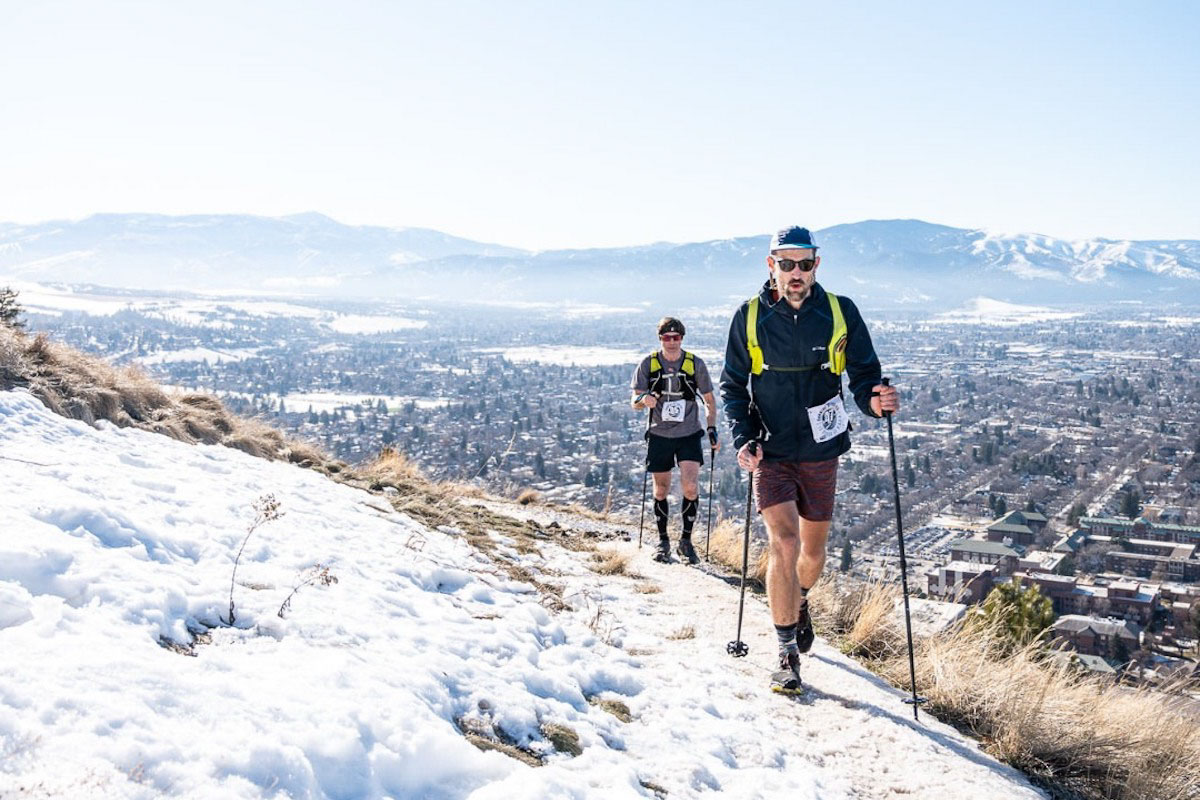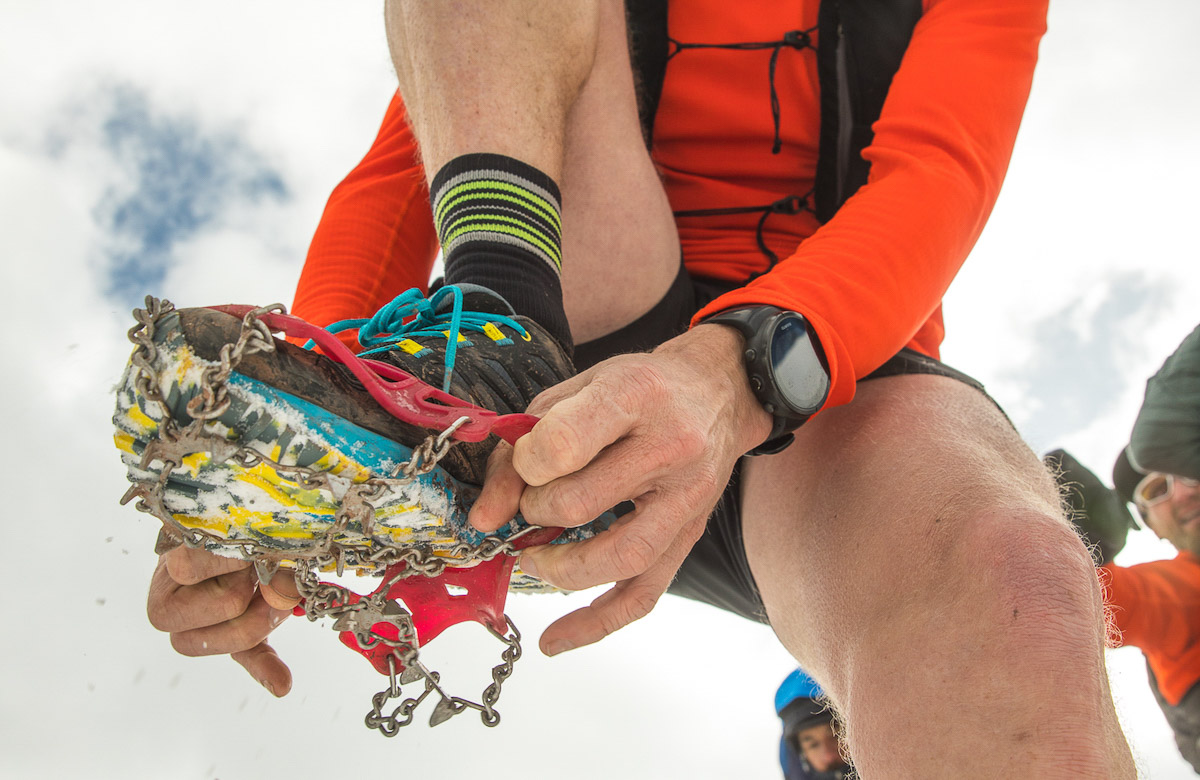Anyone who has run on the trails around Salt Lake City, Utah, knows that the air quality isn’t always the best.
The sprawling metropolis stretches for over 80 miles from the towns of Ogden on the north end to Provo on the south. While the population of 1.2 million people is small compared to other U.S. cities, the formidable Wasatch Mountain Range to the east creates an inversion where polluted air gets trapped in the valley to the west, in which the city lies.
This gives Salt Lake City the unfortunate award of having the worst air quality in the country and the 18th worst in the world. That type of air is unpleasant at best, and dangerous for vulnerable groups at worst, and the significant trail running community in the area must ascend high into the peaks to get a whiff of fresh air and train safely.
One of those runners, Jared Campbell, often does his training for races and runs like the Barkley Marathons, Nolan’s 14, and more on Grandeur Peak, one of the most popular high-vert trails around Salt Lake City. Campbell was horrified by both the amount of air pollution, and how little public involvement there was to change it.

A view from the top of Grandeur Peak above Salt Lake City, Utah, showing the pollution in the valley below. Photo: iRunFar/Meghan Hicks
So, about a decade ago, Campbell created a fundraising race on Grandeur Peak called Running Up For Air (RUFA), which eventually grew into a multi-event series called the Up For Air Series, to raise awareness about air quality issues and raise money for organizations working to change it.
For the first few years, it was just Campbell and friends, trudging through the snow, postholing up and down the mountain for fun, and raising a bit of money on the way. “The fundraising started out small,” said Campbell. “It was almost sometimes like a dare from friends or donors to see how many laps their runner could get in.”
But in 2016, Campbell decided to expand the fun run into a full-fledged race, getting permits, official timing, charging a nominal entry fee, and empowering runners to raise money themselves — allowing them to be active participants in the cause for clean air. These days, each lap of the Grandeur Peak course is roughly 6.2 miles, climbing 2,700 feet from the Mill Creek Trailhead to the peak and back down — as many times as possible in either six hours, 12 hours, or 24 hours.
At the time of their registration, runners are connected to Give Signup, where the registration fees, money raised by runners, and donations from bigger organizations are coalesced into one place, and the money is given directly to the chosen clean-air specific charities of Breathe Utah and Utah Clean Energy.

Runners make their way up Mount Sentinel during the 2022 Running Up for Air event in Missoula, Montana. Photo: Anastasia Wilde
The event became so popular that as of 2022, the Up For Air Series now has five running events across three states: Grandeur Peak, Malans Peak, and Rock Canyon in Utah; Mount Sentinel in Missoula, Montana; and Staunton Rocks in Pine, Colorado. Each event has six-, 12-, and 24-hour race options: how much do you want to climb, and how much do you want to fundraise? The Missoula event raises money for Climate Smart Missoula, and the Colorado race for Protect Our Winters and Conservation Colorado.
“We have plans to continue expanding the series,” said Campbell. “I’ve already got people who’d really like to see this race format in Washington and California. It makes sense to keep things local, and the charities they support local to help that community.”
The format of the Up For Air Series was so popular, that local climbers wanted in as well: so Climbing Up For Air (CUFA) was born around the same model. Some really dedicated athletes would even do a six- or 12-hour versions of RUFA in Salt Lake City, and then go over to The Front Climbing Club to climb for six or 12 hours as well.

Runners strap on spikes on Grandeur Peak during the 2018 Running Up For Air event. Photo: Andrew Burr
“What’s really cool about this race series, is not just the funds that are raised, but the public awareness,” said Campbell. “It’s cool to see how much it’s shifted … companies like Black Diamond and Patagonia supporting, but [also runners] talking to their families and friends … that’s a powerful thing, starting a conversation.”
It’s not only Campbell who sees this conversation as the most important element of the race: multiyear participant and two-time winner of the 24-hour race in Salt Lake City, Katie Brown, agrees.
“I feel like this format needs to be a more common thing among trail runners. We have a purpose. It’s an extremely special race,” said Brown, who has lived in the Salt Lake City area for over a decade.
“We’re all working together for a cause, one that we’re intimately aware of — we can see and feel the air quality very viscerally here. Being able to raise money toward efforts that are helping to bring cleaner air and better legislation to the state is such a wonderful motivator.”

Katie Brown after getting second place at the 2022 Running Up for Air 24-Hour Race on Grandeur Peak in Utah. Photo: Mike McMonagle
Brown not only runs in the mountains surrounding the city, but is an avid skier and climber as well, and feels the community surrounding the race makes it the best one around. Brown not only made connections with her local community at the race, but also met David Mitchell, who is now her husband, while training for her second year of the race in 2019.
Though he couldn’t participate that year — ironically twisting his ankle on the very run where they met — Brown and Mitchell came together the next year to both win in 2020: Brown with 11 laps, and Mitchell with 13.
“In addition to raising funds … you just feel like you’re in this huge party working toward a ginormous goal. You get people in the six- and 12-hour races with so much energy, revitalizing you the whole way,” said Brown. “It feels really good and fulfilling to make this place better and … to put your money where your mouth is.”
iRunFar’s own Managing Editor Meghan Hicks has participated in the Salt Lake City Running Up For Air event a couple of times and talks about the series’ position in the sport:
“Without our natural environments, we don’t have trail running. For a long time, we trail runners — myself included — took our trails for granted. I thought they’d always be there for us. Now, every wild place is threatened by something — air, water, and noise pollution; development encroachment; climate change; so much more.
“Our action and advocacy for wild places needs to become folded into the core of our sport, and the Up For Air Series does precisely this. It’s awesome that Jared’s model is growing because our environment — and sport — need it.”
Call for Comments
- Have you ever participated in the Up For Air Series?
- Would you be willing to bring this event or something like it to your own community to help raise awareness of and money for a local environmental issue?
- Can you share a story of another event near you acting on this same concept of binding recreation and advocacy?

Runners and volunteers converge on the aid station at the 2018 Running Up For Air event on Grandeur Peak in Utah. Photo: Andrew Burr
